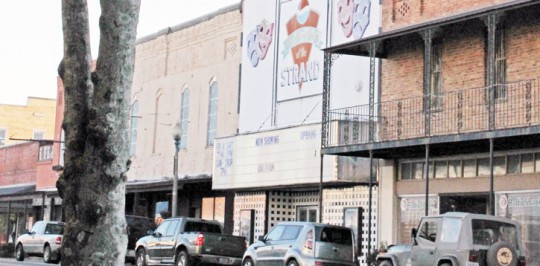Area Businesses Alerted About Bad Checks
May 16, 2013
The Atmore Police Department is warning business owners to be on the lookout for bogus checks.
Officials said Wednesday that the department has received numerous complaints from local business owners that have accepted checks that turned out to be forged, counterfeited or written on closed accounts.
” This has become a more frequent problem in the past few months,” said Investigator Robby Williams. “Business owners and employees should be diligent when dealing with customers paying with checks.”
The Atmore Police Department is offering the following tips to area businesses that accept checks:
- Determine the origin of the check. If it is a check you were not expecting or is from a sender with whom you are unfamiliar, you should be suspicious of its validity.
- At the bottom of a check, you will see three groups of numbers. The first group is the routing number. The second is the account number, and the third is the check number. The bottom line on all checks printed and used in North America is printed using a special font called MICR (short for Magnetic Ink Character Recognition). Look at the check number in the upper right hand corner and see if it matches the last few digits (the third group of numbers) on the MICR line. The MICR line is the long string of numbers that is at the bottom of the check.
- Visit: http://www.fededirectory.frb.org/search.cfm Enter the routing number in the search box and click “Search.” The website will then tell you what financial institution is linked to that routing number, along with the city in which the financial institution is located. If this is not the same as the information printed on the check, it may be a fake check.
- Call the bank that issued the check if you are still unsure about the check’s validity. You can provide them with the routing number and account number, as shown in the MICR line. They can then tell you if it is a legit check.
- Confirm the identity of the check writer. All I.D. can be forged. The most reliable form of I.D. is that which contains a photo and a physical description. Take the I.D. in hand and write the I.D. number, birth date, address and other descriptive data on the front of the check. If possible, make a photo copy of the I.D. Ask questions. If the I.D. does not belong to the person writing the check, they may be thrown off guard. Make sure the person presenting the check is the same person on the I.D. Several of the cases being currently investigated by Atmore Police involve the offender using a fake I.D.
- The signature should be legible and signed in the presence of the individual accepting the check. Do NOT accept previously signed checks. For a company check, it is vital that the signature is legible. If not, print the individual’s name on the front of the check. The complete address should be imprinted on the check.
- Require a street address, in addition to a P.O. Box number. Obtain a phone number as well.
Pictured: A portion of downtown Atmore. NorthEscambia.com file photo, click to enlarge.
Comments
One Response to “Area Businesses Alerted About Bad Checks”




We are warned that “the love of money is the root of ALL evil.” I read a couple years ago about a fella busted for stealing sheets of metal from his work . . . and counterfeiting QUARTERS! Thank you, William, for keeping us “in the know.”